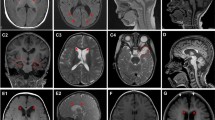Abstract
Cystinuria is a genetic disorder in the domestic dog that leads to recurrent urolith formation. The genetic basis of the disorder is best characterized in humans and is caused by mutations in one of the amino acid transporter genes SLC3A1 or SLC7A9, which results in hyperexcretion of cystine and the dibasic amino acids in the urine and subsequent precipitation of cystine due to its low solubility in urine. In this study we describe the cloning of the canine SLC7A9 cDNA and present a thorough mutation analysis of the coding SLC3A1 and SLC7A9 regions in cystinuric dogs of different breeds. Mutation analysis of the two cystinuria disease genes revealed one SLC7A9 mutation (A217T) and two SLC3A1 mutations (I192V and S698G) in French and English Bulldogs that affect nonconserved amino acid residues, arguing against functional impact on the proteins. The absence of deleterious mutations linked to cystinuria in the remainder of our panel of cystinuric dogs is surprising because SLC3A1 or SLC7A9 mutations explain approximately 70% of all human cystinuria cases studied. The present study, along with previous investigations of canine and human cystinuria, implies that regulatory parts of the SLC3A1 and SLC7A9 genes as well as other unknown genes may harbor mutations causing cystinuria.


Similar content being viewed by others
References
Bauch C, Verrey F (2002) Apical heterodimeric cystine and cationic amino acid transporter expressed in MDCK cells. Am J Physiol Renal Physiol 283: F181–189
Bauch C, Forster N, Loffing-Cueni D, Summa V, Verrey F (2003) Functional cooperation of epithelial heteromeric amino acid transporters expressed in madin–darby canine kidney cells. J Biol Chem 278(2): 1316–1322
Bovee KC (1986) Canine cystine urolithiasis. Vet Clin North Am Small Anim Pract 16: 211–215
Bovee KC, Segal S (1984) Renal tubule reabsorption of amino acids after lysine loading of cystinuric dogs. Metabolism 33: 602–607
Bovee KC, Thier SO, Rea C, Segal S (1974) Renal clearance of amino acids in canine cystinuria. Metabolism 23L: 51–58
Calonge MJ, Gasparini P, Chillaron J, Chillon M, Gallucci M, et al. (1994) Cystinuria caused by mutations in rBAT, a gene involved in the transport of cystine. Nat Genet 6, 420–425
Casal ML, Giger U, Bovee KC, Patterson DF (1995) Inheritance of cystinuria and renal defect in Newfoundlands. J Am Vet Med Assoc 207: 1585–1589
Clark WT, Cuddeford D (1971) A study of the amino-acids in urine from dogs with cystine urolithiasis. Vet Rec 88: 414–417
Craan AG (1981) Cystinuria: the disease and its models. Life Sci 28: 5–22
Crawhall JC, Purkiss P, Young EP (1970) Cystine metabolism in the dog. Biochem Med 3: 384–396
Fernandez E, Carrascal M, Rousaud F, Abian J, Zorzano A, et al. (2002) rBAT-b(0,+)AT heterodimer is the main apical reabsorption system for cystine in the kidney Am J Physiol Renal Physiol 283(3): F540–F548
Font MA, Feliubadalo L, Estivill X, Nunes V, Golomb E, et al. International Cystinuria Consortium (2001) Functional analysis of mutations in SLC7A9, and genotype–phenotype correlation in non-Type I cystinuria. Hum Mol Genet 10: 305–316
Font-Llitjos M, Jimenez-Vidal M, Bisceglia L, Di Perna M, de Sanctis L, et al. (2005) New insights into cystinuria: 40 new mutations, genotype–phenotype correlation, and digenic inheritance causing partial phenotype. J Med Genet 42: 58–68
Franca R, Veljkovic E, Walter S, Wagner CA, Verrey F (2005) Heterodimeric amino acid transporter glycoprotein domains determining functional subunit association. Biochem J 388(pt 2), 435–443
Harnevik L, Fjellstedt E, Molbaek A, Tiselius HG, Denneberg T, et al. (2001) Identification of 12 novel mutations in the SLC3A1 gene in Swedish cystinuria patients. Hum Mutat 18: 516–525
Harnevik L, Fjellstedt E, Molbaek A, Denneberg T, Soderkvist P (2003) Mutation analysis of SLC7A9 in cystinuria patients in Sweden. Genet Test 7: 13–20
Henthorn PS, Liu J, Gidalevich T, Fang J, Casal ML, et al. (2000) Canine cystinuria: polymorphism in the canine SLC3A1 gene and identification of a nonsense mutation in cystinuric Newfoundland dogs. Hum Genet 107: 295–303
Holtzapple PG, Rea C, Bovee K, Segal S (1971) Characteristics of cystine and lysine transport in renal jejunal tissue from cystinuric dogs. Metabolism 20: 1016–1022
Hoppe A, Denneberg T (2001) Cystinuria in the dog: clinical studies during 14 years of medical treatment. J Vet Intern Med 15: 361–367
Hoppe A, Denneberg T, Jeppsson JO, Kagedal B (1993) Urinary excretion of amino acids in normal and cystinuric dogs. Br Vet J 149: 253–268
Treacher RJ (1964) The aetiology of canine cystinuria. Biochem J 90, 494–498
Tsan MF, Jones TC, Thornton GW, Levy HL, Gilmore C, Wilson TH (1972b) Canine cystinuria: its urinary amino acid pattern and genetic analysis. Am J Vet Res 33: 2455–2461
Acknowledgments
This work was supported by funding from the Swedish Research Council, AGRIA Djurförsäkringar, and Forsbergs stiftelse.
Author information
Authors and Affiliations
Corresponding author
Additional information
The SLC7A9 transcript identified in this article has been submitted to GenBank under accession No. DQ233640.
Rights and permissions
About this article
Cite this article
Harnevik, L., Hoppe, A. & Söderkvist, P. SLC7A9 cDNA cloning and mutational analysis of SLC3A1 and SLC7A9 in canine cystinuria. Mamm Genome 17, 769–776 (2006). https://doi.org/10.1007/s00335-005-0146-4
Received:
Accepted:
Published:
Issue Date:
DOI: https://doi.org/10.1007/s00335-005-0146-4




